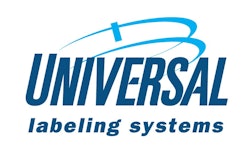The past two months we’ve featured advice from users of contract packagers (CPs, aka co-packers, or private-label manufacturers) about selecting and using CPs. This month we turn the tables: CPs offer advice about working with packagers and with CPs. Edited for clarity, the following recommendations and comments were selected from among 150+ responses to a 2009 Packworld.com online survey.
• Always communicate, [especially] if there are problems.
• Communication is the greatest asset between the two companies. The better the communication from the start, the greater the chance to meet deadlines, produce a quality package, and stay within budget.
• Lock in a relationship where your competition can only wish they were in your position.
• Make sure the process you are to perform is agreed upon in writing with the customer.
• Check all data regularly.
• Keep all discussions written and dated.
• Maintain clear specifications between companies.
• Don’t rely on loyalty and handshakes—get things in writing and have a contract with minimum volume requirements.
• Have all specifications upfront and signed off on by your client, with no holes left uncovered.
• It’s very important to be informed about the economic changes in the industry in order to offer products and services really needed by the customer. We cannot wait for an order; it’s necessary to search out opportunity.
• Ask as many questions as possible; understand not only what the customer wants, but also what they need. What are they trying to achieve?
• Have the (potential) customer visit the facility; we have found that once the customer gets here, they see that we have much more to offer than they expected.
• Have a contract that plainly states cause and effect for conflict resolution.
• Have a system in place that can be easily traceable for quality/count/shipment information.
• Just because you want to control the process in-house does not mean it will be easier in the long run. It is better to use a contract packager that knows how to do it right, rather than to struggle and do it internally.
• Do not exclude a potential contractor simply because you’ve never worked with them, it might just be the best fit for your organization.
• Keep asking what needs to be accomplished. The real savings may not be in the cost to package.
• Keep your customer happy! Give them no reason to look somewhere else!
• Communicate about EVERYTHING.
• Communicate well about volume and type of packaging, with a firm plan, good technical support, and solid follow-up.
• Strong communications, service, and quality serve as strong references points when recommending a contract packaging company to a client.
• Communicate your production needs in advance. Limit the number of fast-turnaround requests. Make sure that you have established the necessary quality-control requirements.
• Each project needs to have a statement of work outlining all the action items and the responsible party, even the financial part as well. Open communication is also very important to the success of each project.
Work closely with clients and understand all of their requirements, as this will ensure that there are no miscommunications or problems later.
• Meet schedules and on-time delivery. Deliver unquestionable quality on time, and you will keep your customers happy. We also focus on superior customer service.
• Make sure you have as much "stickiness" with each customer as possible without sacrificing your ability to serve other customers. Projects such as integrated ordering/quoting processes and customer portals can help make you tighter, while improving your efficiencies.
Many responses were related to documentation, such as this comprehensive overview:
Get contract details and customers’ packaging requirements specified completely on paper with technical details/MSDS of the material being packed.
- Get contract details and customers’ packaging requirements specified completely on paper with technical details/MSDS of the material being packed.
- Get the packaging materials from the customer in time.
- Perform the work preferably with supervision from the customer, otherwise get the initial packaging done approved by the customer and then continue.
- Try to maintain all packaging requisites as required by the customer without changing any of their parameters. If at all required to do so, it should be done with prior permission and approval in writing from the customer.
- Always complete the allotted work on time and gain customers' acceptance of completion in writing.
• Same advice I'd give for any business interaction: Leave nothing undocumented. Every request, every phone call, every meeting, and every conversation must be written down; if it deals with customer product deliverables, have them sign off.
• Supply as much information as possible, like specs, instructions, etc., as well as expectations to ensure a smooth start-up on a new project.
• Have a working template from design to finished product for the customer to follow with timetables.
• Be sure you understand customer requirements, yet plan for costly changes to design.
• Oftentimes the customer believes they can do it themselves less-expensively. I compare our overhead rate to theirs early on in our conversation to quickly show the possible savings for them by using our services.
• Minimizing scrap and waste, maximizing the use of each employee's talents, and getting it done right the first time creates improved value to the company's bottom line.
• Try to help the customer with the design of packaging and products before they are finalized. We have saved our customers thousands of dollars by utilizing existing or standard packages rather than a custom package.
• We need to know about the experiences of other companies in order to learn and gain confidence.
• Provide the best quality, on-time delivery, and accurate packaging on a consistent basis while continuing to work toward innovative ways of keeping costs as low as possible.
• Be sure that customer/packer knows who will source what, and who will pay for what—co-packers are not banks.
• Accept the fact that their purchasing officer will contract based on price and delivery, but also know that their "embedded" QC and Corporate people will keep adding to your overhead without additional compensation—and quote the pricing accordingly.
• Customer needs to have all packaging materials ready and checked in advance, the target quantity set, and final checking point at the time of release.
• Ensure you have a strong management team in place and get creative with process innovation to drive sustainability.
• Determine specifically what you want and need prior to going out for bid. Do you have specifications developed for your project? If not then get them together asap, and they can always be revised later if necessary. Qualify (and reduce) your field of contractors based on key criteria and performance indicators.
• Ensure you know in detail your customers’ expectations on quality, image, and reporting.
• You have to be flexible within reason.
• Let them know the shipment dates if they change.
• Inform your customers that you use an outside vendor for some/all of your packaging.

























